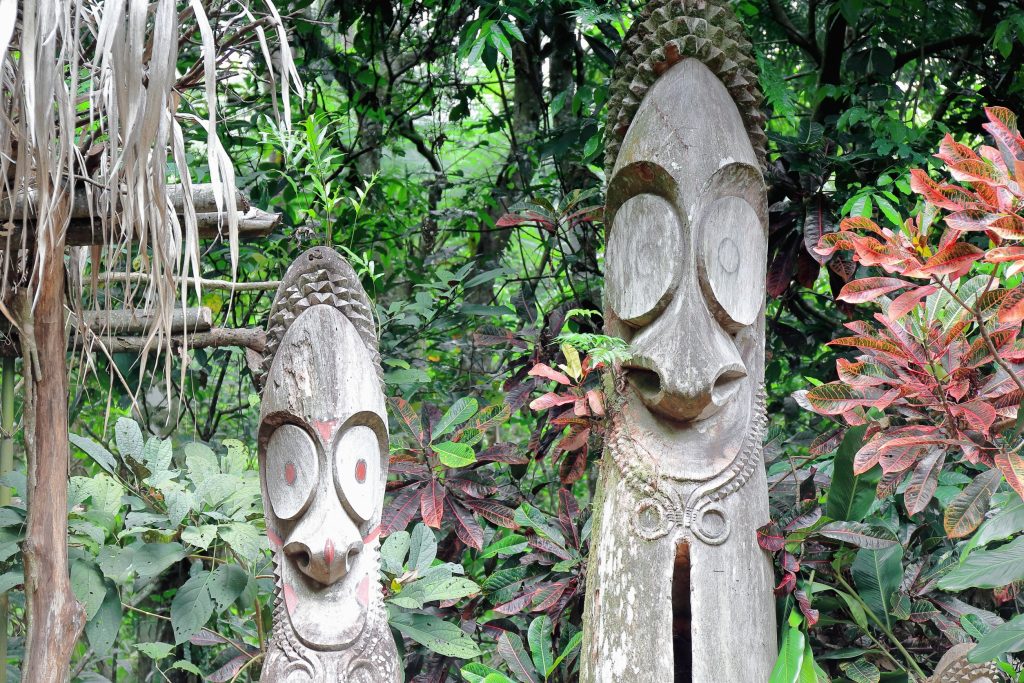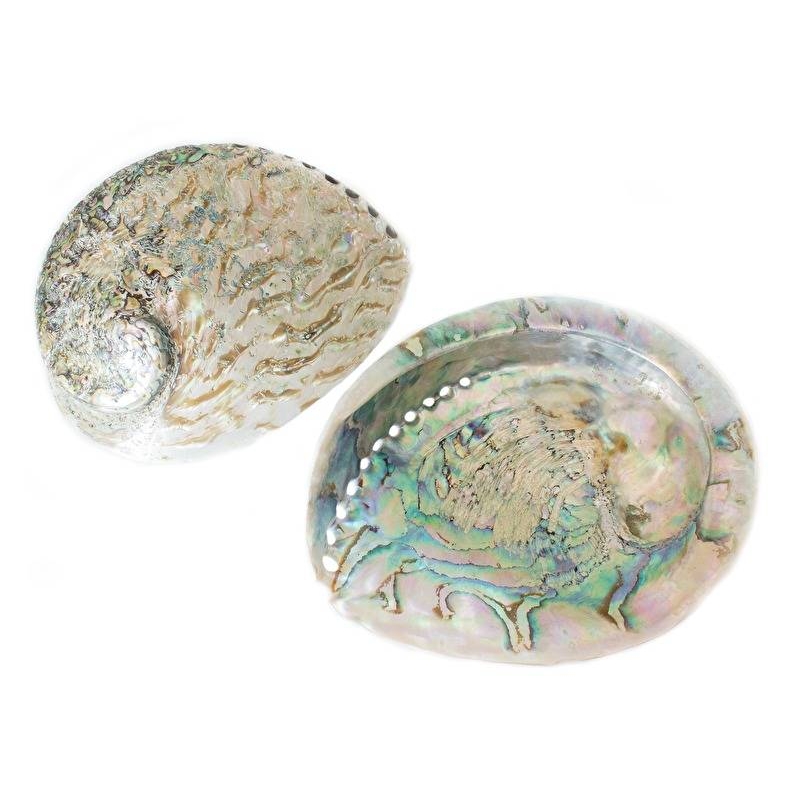Discover all about the Graden Sculptures of Vanuatu
These unique Graden sculptures are deeply rooted in the local culture of Vanuatu and tell stories of tradition, connection and respect for nature. They are still an essential part of everyday life. Because they pass on old stories and traditions that have been cherished for generations.
Each statue is unique and carries its own story about the history of the community and its ancestors. In this blog we would like to tell you more about the meaning and beauty of this traditional art form.

Vanuatu: Culture, Traditions and Natural Beauty
Vanuatu, an archipelago in the Pacific Ocean, is located east of Australia, north of New Zealand and west of Fiji.
These islands, with their azure waters, lush rainforests and hospitable people, are a paradise destination.
They are also known for their rich cultural heritage, where traditional customs and rituals still play a central role in the daily lives of local communities.
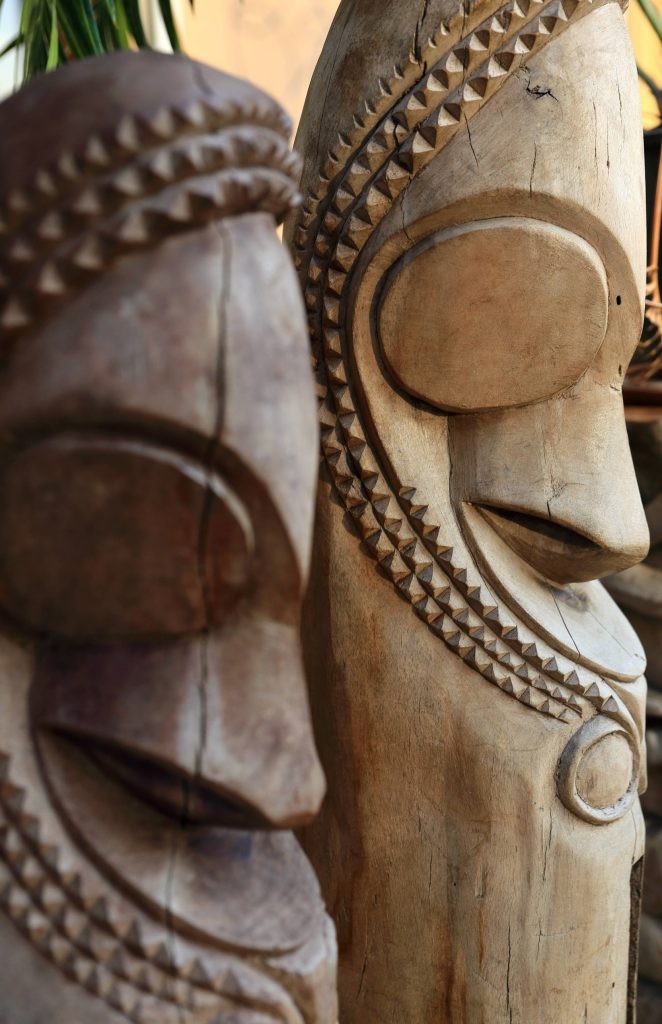
What are Degree Sculptures?
Degree sculptures are traditional works of art found on the islands of the Pacific Ocean region of Vanuatu.
They are usually made of stone or wood and have human shapes.
These sculptures are deeply rooted in local culture. And play an important role in rituals and ceremonies within the community.
Degree sculptures are an important part of the degree rituals. A system of social ranking by which individuals can rise in status and power within their community.
These sculptures are used to honor the ancestors and celebrate the new ranks during ceremonial events.
The meaning and symbolism of degree sculptures vary depending on local traditions and customs. But they are important cultural artifacts that reflect the history and identity of the community.
Grade sculptures are unique works of art on the islands of Vanuatu. These sculptures embody the community's history and identity, and are important cultural artifacts in the region. They are essential in rituals and degree rituals, serving to honor ancestors and connect the community.
The ideal image of Male Beauty
The unique shape of degree sculptures reflects the beauty ideals of men in the local communities of Vanuatu.
These sculptures are characterized by wide noses, large nostrils with possibly a pierced septum, long chins and high foreheads.
Degree sculptures in Vanuatu embody the beauty ideal of masculine strength and wisdom, with broad noses, large nostrils, long chins and high foreheads.
These features are considered symbolic of masculine strength, wisdom and beauty according to the traditional norms of the culture.
The sculptures bear these physical characteristics with pride. And serve as a tribute to the men of the community.
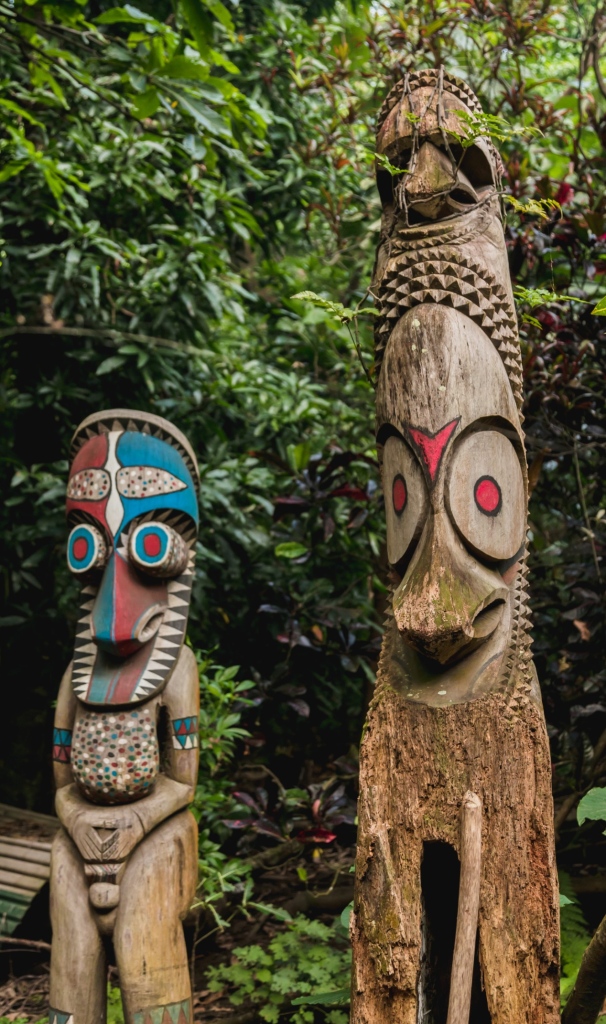
Social Status and Grade Rituals
Within Vanuatu's local communities, social status plays a crucial role. Where degree rituals function as an essential part of this social system. These rituals offer men the opportunity to rise in status and power.
To reach a higher rank, candidates must organize specific ritual events, provide enough Naravé pigs for public sacrifices, and have a unique grade sculpture made specific to their rank.
With each increase in rank comes specific privileges and symbols of status. Such as the right to wear certain jewelry and flowers in specific colors that emphasize their status.
Degree rituals are a path to a higher social status, in which rituals, sacrifices and unique degree sculptures are an essential part. Climbing the ranks is not only an individual achievement, but also a celebration of common traditions and values, conferring privileges and symbols of status.
More degree sculptures are placed around the house as a tangible sign of their elevated social position. As a result, these sculptures serve as a visible representation of their acquired status and power within the community.
The Grade Sculptures evolve as one rises in the grade hierarchy, from a simple head to a full three-dimensional figure with clear genitalia made of tree fern root. At the highest grades, the figures are also combined with complex wooden and stone structures.
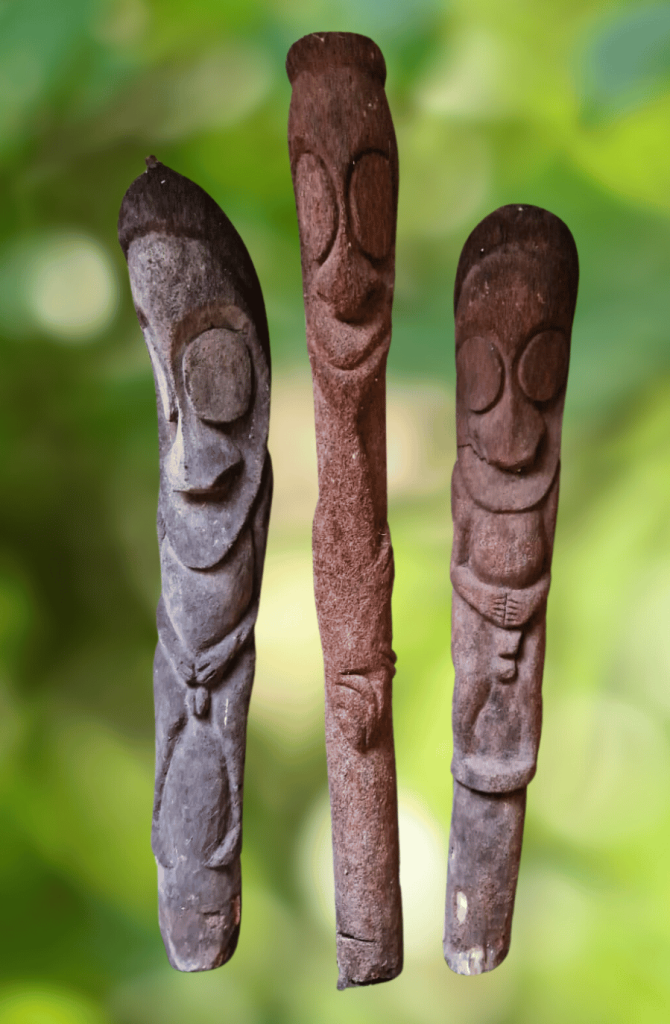
The Diversity and Meaning
Grade sculptures are an intriguing art form within local communities, with each type having a specific function and meaning.
The nenna statues, which represent ghosts or shadows, are characterized by their disc-shaped eyes.
Grade sculptures vary in form and function: from statues of spirits to fully three-dimensional statues of ancestors.
In addition, there are fully three-dimensional sculptures depicting the ancestors, with a clear representation of genitalia to symbolize a certain degree.
But there are also female grade images that are purely there to entertain men.
The Classical Grade Sculptures in Ambryn Style
Grade sculptures play a vital role in the communities of Vanuatu, with each island representing its own unique style.
This is also the case on the island of Ambryn! Today the Ambryn style is known as the classical style of degree statues and remains an important tangible part of this island's cultural heritage.
It was this unique style that attracted the attention of colonists and collectors. They wanted the Ambryn style statues so badly that they also ordered these statues to be made.
Due to this preference for the images, these unique sculptures in Ambryn style can now regularly be found in Western museums.
Conclusion
These unique works of art are steeped in tradition and meaning. They offer us insight into the rich cultural history of Vanuatu's local communities.
From showing social status to passing on old stories and rituals, the Graden Sculptures tell us a lot about the identity and values of this special archipelago.
